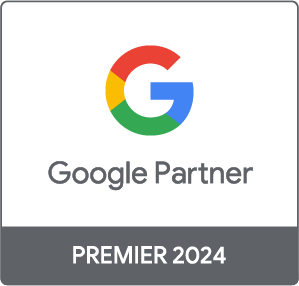Improve PPC performance using Google Display Network

Looking to attract new audiences or to keep your brand front of mind? If you’re not already harnessing the power of the Google Display Network (GDN) in your PPC campaigns, here’s how to start.
Find out how to maximise your PPC campaign result using GDN:
- What is the Google Display Network?
- Why is the Google Display Network useful?
- How to use the Google Display Network
- When to use the Google Display Network
- The cons of Google Display Network
- How to optimise your GDN campaign performance
- Why use GDN vs other ad types
What is Google Display Network?
GDN is a network of over 2 million websites, apps and videos where your Google Ads are displayed and interacted with. It’s a massive online space that will provide a strong platform for any campaign outside of Search.
Some of the most memorable and eye-catching ads online today are found in the box and banner ads that are placed on the GDN.
Why is the Google Display Network useful?
- A vast network of over 2 million opportunities: GDN offers huge exposure for your brand through its extensive network of sites, apps, and videos.
- Ads are shown to users while they’re browsing other sites: this keeps your brand on their radar, even after they’ve specifically searched for your service or company. Think of it like reminders; non-intrusive notifications that ensure your brand won’t go forgotten.
- Image and video-rich: ads on GDN move beyond typical Search campaigns and make the most of the image and video-rich ad space online, reaching 90% of global Internet users. That’s a significant and powerful opportunity for your next campaign.
- Reaching new audiences and maintaining interest: GDN campaigns are a brilliant way to bring in a new audience from a wider percentage of the Internet’s advertising space. These are not the highly targeted campaigns you find in Search, but are effective at maintaining the interest of previous visitors and introducing curious users to your brand for the very first time.
How to use Google Display Network
You can create ads for the GDN in Google Ads very easily:
- Select “Display Network only” as your campaign type.
- Choose your preferences for the types of GDN targeting for your campaign.
- Display ads allow you to reach potential customers based on their interests in your products or services.
- You can also benefit from their interests based on historical browsing history.
Targeting options
There are three targeting options to choose from:
- Affinity Audiences: here you can select from 80 different interest groups, such as “gamers” or “auto enthusiasts”.
- Custom Affinity Audiences: use the power of keywords, choosing your own to create a custom, highly specific audience. You can also add urls of sites that your customer base will visit, that way, you can direct your ad to potentially pop up on those particular sites that are most relevant to your audience.
- In-Market Audiences: this targeting option identifies potential customers who are actively searching for products or services that are similar to your brand. These could be warm leads that convert at a faster rate.
- Demographic Groups: in addition to these more general targeting options, you can create target groups based on attributes such as age, gender, and parental status.
When to use GDN
Campaigns that utilise the GDN are best for:
- Building brand identity and improving brand awareness - these campaigns track users and pop up on repeat, keeping the brand front and centre.
- Retargeting campaigns - don’t lose out on customers who are already highly engaged with your product or service. These are warm leads that you should be making the most of!
The cons of Google Display Network
- Lower click-through-rate: some reports say that the average click-through rate (CTR) on GDN is lower than what you may expect in Search campaigns. Keep this in mind, but remember that the best campaigns work in conjunction with Search and Display, which are often used at very different stages of any user journey.
- Limited control over ad placement: unlike Search campaigns where you can get granular over the placement of your ads, with GDN, you have to trust the algorithm to place your ads for you. We recommend using accounts with a strong historical data set to minimise any unwanted placements and take a look at your negative keywords.
- Lower conversion rates: don’t expect the same sky-high conversion rate that you can find in your Search campaigns. Think about where the user is on their multi-touch-point journey to a conversation when they interact with your GDN ad.
How to optimise your GDN campaign performance
- Monitor everything: keep an eye on every element of your campaign. GDN campaigns cover a lot of ground, which increases the risk of spending money on irrelevant exposure and clicks.
- Focus on negative keywords and unwanted sites: make a blacklist. Be specific. Have different lists for different campaigns. This helps minimise wasted budget, so will definitely save you money in the long run.
- Make the most of machine learning: allow the results of the automated placements to guide some of your campaign decisions. Machine learning-assisted choices unite your skill in campaign management with the power of Google’s automation. It’s truly modern and can unlock unseen potential in your campaign.
Why use GDN vs other ad types
- Brand awareness: build your brand over a larger expanse of the internet ad space.
- Lower competition: if you’re struggling with expensive keywords in your brand industry, GDN has less competition for pricey keyword bids compared to highly exclusive Search campaigns.
- Cost-effective: you may unlock a more cost-effective way to reach your desired audience.
Read more about other Google Ad types
Google Display Network summary
GDN campaigns are effective in maintaining the interest of previous visitors and introducing new audiences to a brand, all within a highly visual and engaging network.
While GDN offers less control over ad placement and may have lower click-through and conversion rates compared to Search campaigns, we believe the unique placement of GDN ads can bring incredible opportunities to your next campaign.
*Header image sourced by work experience students. Thank you
- Find out more about our paid search services








